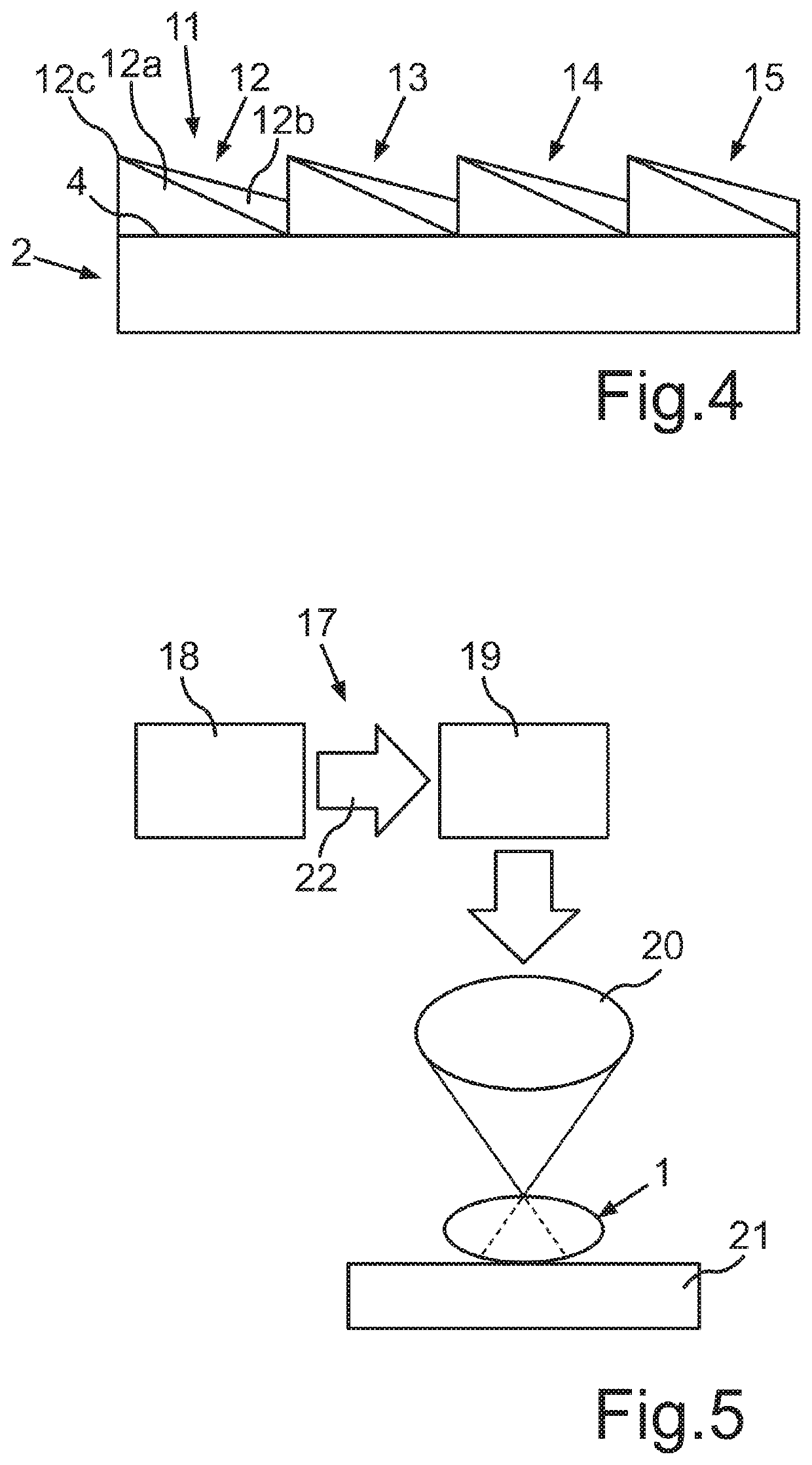Artifical eye lens with diffractive grating structure and method for producing an artificial eye lens
- Summary
- Abstract
- Description
- Claims
- Application Information
AI Technical Summary
Benefits of technology
Problems solved by technology
Method used
Image
Examples
Embodiment Construction
[0046]In the figures, identical or functionally equivalent elements are provided with the same reference signs.
[0047]FIG. 1a shows a perspective illustration of a first exemplary embodiment of an artificial eye lens 1, which is in this case an intraocular lens. The artificial eye lens 1, referred to below as eye lens 1, comprises an optical part 2 and, adjacent thereto, a haptic arrangement 3. The eye lens 1 is multifocal, in particular trifocal. The eye lens 1 is foldable and may be introduced into an eye through a small incision. The optical part 2, which is essential for the optical imaging property of the eye lens 1, comprises an optical principal axis A. Furthermore, as viewed in the direction of said optical principal axis A, the optical part 2 has a first optical surface or optical side 4, which can be a front side, and opposite thereto has a second optical surface or optical side 5, which can be a rear side. In the implanted state of the eye lens 1 in the eye, the front side...
PUM
 Login to View More
Login to View More Abstract
Description
Claims
Application Information
 Login to View More
Login to View More - R&D
- Intellectual Property
- Life Sciences
- Materials
- Tech Scout
- Unparalleled Data Quality
- Higher Quality Content
- 60% Fewer Hallucinations
Browse by: Latest US Patents, China's latest patents, Technical Efficacy Thesaurus, Application Domain, Technology Topic, Popular Technical Reports.
© 2025 PatSnap. All rights reserved.Legal|Privacy policy|Modern Slavery Act Transparency Statement|Sitemap|About US| Contact US: help@patsnap.com


